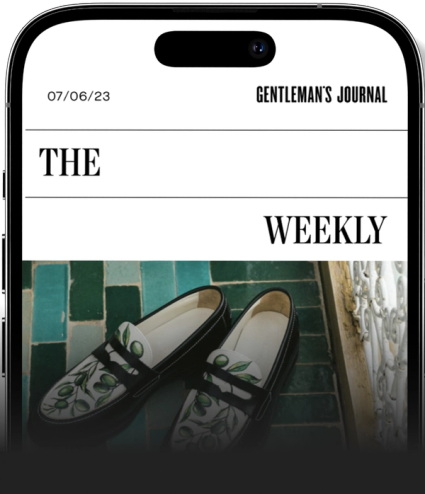
Words: Rory FH Smith
On Monday the 28th May 1979, the Colombian broadsheet newspaper El Tiempo published a report on the Copa Renault race that had run at the weekend. As usual, the article detailed the highs, lows and blows of the amateur motor race, alongside a black and white image of two Renault 4s rubbing bumpers along the rough and ready race track outside Bogotá.
The report — a half-page nod to Colombia’s under-developed but enthusiastic motorsport industry — was forgettable, save for the last sentence. Under the headline “Las nuevas figures,” at the end of the report, the article announced, “the newcomers, Lucio Bernal, from Bogotá; Pablo Escobar, Gustavo Gaviria and Juan Yepes, all from the capital of Antioquia.”
Of the three rookie racers from Medellín, one would go on to become the world’s most notorious narcoterrorist. Despite the worldwide reign of terror and destruction that Escobar went on to conduct, the first recorded reference to El Patron in Colombian media had nothing to do with drug trafficking, murder or political violence — but to his achievements as a rookie race driver in a spit and sawdust motor racing series.
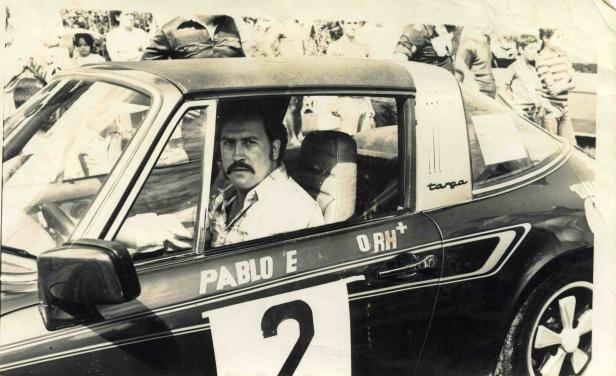
The story begins some 13 years earlier, with the introduction of a plucky but basic French car called the Renault 4. The year was 1966, and a Colombian car dealer called Auto Andes started importing the models from the Fasa-Renault factory in Spain. Aside from its uncanny resemblance to a parallelogram, the car was a reliable and affordable runabout that ushered in newfound mobility to Colombia’s emerging middle-classes. Central to Renault’s sales strategy in Colombia was participation in sporting events such as Rally Colombia, which saw the French cars crisscross the nation via death defying roads, demonstrating their agility and go-anywhere ability. The Colombians were convinced by the plucky little French creation, but not half as much as much as the man who would become the nation’s most infamous son. It’s reported that Escobar was such a fan of the Renault 4 that the humble motor still had a place in his private car collection well after his ill-gotten gains made him one of the wealthiest people on the planet.
"All the car's were supposed to be equal — but Pablo's was a little more equal than the others..."
Following El Tiempo’s initial mention of the man from Medellín’s achievements on the circuit in May 1979, the paper kept up its reportage of Escobar’s racing campaign. “Flyers like Pablo Escobar are on the rise…[he’s] is second overall, 13 points behind the leader,” wrote one reporter. Despite walking into the sport earlier that year and competing in no more than six races, by the end of the 1979 Copa Renault competition, Escobar found himself on the podium as runner-up. To naive spectators, blissfully unaware of Escobar’s enterprises, it certainly looked like Don Pablo had a knack for it but his podium placement was entirely predictable. While reports at the time waxed lyrical about his newfound abilities, none mentioned that despite it being a spec series, where all cars have equal performance, Pablo’s car was a little more equal than the others. On a number of occasions, he was reported to have lost places in the corners but miraculously made up for lost ground, powering ahead of the competition in the straights. Unsurprisingly, Escobar’s interpretation of the technical requirements went unchallenged and no cheating was ever recorded.
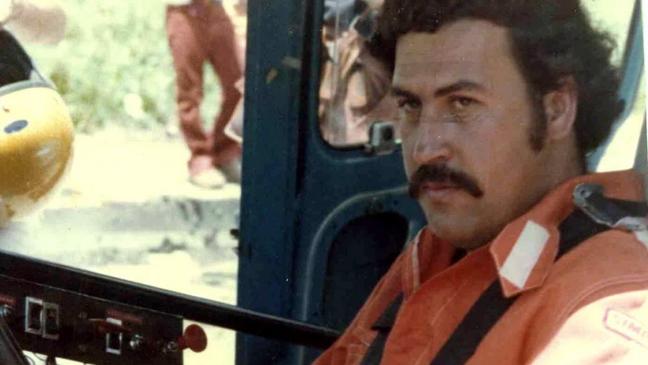
But Don Pablo’s resourceful race-winning tactics extended beyond the track, too. At one race meeting, the cartel boss was reported to have used his connections with local police to prevent his rivals from even reaching the circuit. Discovering another way of keeping the competition at bay, he often found himself lining up against people on his payroll, such as his cousin Gustavo Gaviria. Between them, they would arrive with four cars, one each and two spares. Beyond family, his competitors also extended to his narco “frenemies,” the Ochoa brothers, with whom he managed the notorious Medellín Cartel. In keeping with the image of excess and extreme wealth he later came to represent, Don Pablo’s presence at the racetrack was a spectacle in itself. “He was the only one with that kind of operation, he would arrive in a helicopter,” said fellow Copa Renault 4 competitor Julian Calle. “But after the race, he would offer everyone lavish meals with champagne and unbelievable women. I wonder if anyone really believed he did not sell drugs,” he added.
"After the race, he would offer everyone lavish meals with champagne and unbelievable women..."
With Escobar’s fortune starting to grow considerably into the 1980s, so did his appetite for topflight racing. Despite starting his motorsport career with a 24 horsepower Renault 4, it wasn’t long until he graduated to bigger and better machines. Purchasing a 1974 Porsche 911 RSR — the same car once piloted in the ’74 IROC series by racing legend Emmerson Fittipaldi — the cartel baron set his sights on other races in South America as well as hill climbs in his native city. It was during one of these events that Escobar’s relationship with a young, Medellín-born racing talent by the name of Ricardo Londoño became apparent. Widely acknowledged as the fastest man in Colombia and the country’s most promising racer at the time, Escobar challenged Londoño to a time trial race, betting he would come within 15 seconds. Rising to the challenge, Londoño and Escobar went head to head. Despite the sizeable talent chasm between the two contenders, Don Pablo finished within eight seconds of his rival’s time, which was good enough for a win in his book.

While Escobar’s competitive stint against Londoño was short-lived, his association with the promising driver would be much longer lasting, marking a whole new chapter in Don Pablo’s motorsport career. Having proved himself behind the wheel — at least in his eyes — Escobar’s days in the driving seat gradually disappeared as his sprawling business empire got the better of him. At the same time, Londoño’s racing career was on the rise in the late 1970s, after excelling in domestic stock car and motorcycle speed championships. “The young racer’s sharp wits soon earned him the nickname ‘Cuchilla,’ which translates as ‘Razor,'” said motorsport journalist and contemporary Mike Doodson. Moving to the USA the same year Escobar made his racing debut, Londoño raced in the IMSA GT series and placed seventh in the 24 hours of Daytona the following year. By all accounts, he was one to watch and well on his way to being the most successful racing driver Colombia had ever seen. While Escobar’s time behind the wheel had all but ended, the cartel boss was still keen to keep his hand in motorsport circles and Londoño proved to be his means of doing so.
"Bernie Ecclestone followed the paper trail, and soon linked the driver’s funds to a mysterious Medellín-based company..."
Eventually, the time came for Londoño to break into the big time. Moving to Europe in 1980 with backing from the perfectly-above-board-sounding ‘National Association of Coffee Growers’, Londoño arrived at Silverstone for a drive in an ex-F1 Lotus at the British Formula 1 Championship. Far from a top-spec car, Londoño did his best and finished the race in a respectable seventh place. The Colombian’s talent, not to mention the wealth he brought with him, made him an attractive proposition to a struggling Formula 1 team. After loosing it’s major sponsor Unipart, representatives from the British team Ensign were on the hunt for cash and made a trip to a rather luxurious family farmhouse in the Colombian countryside.
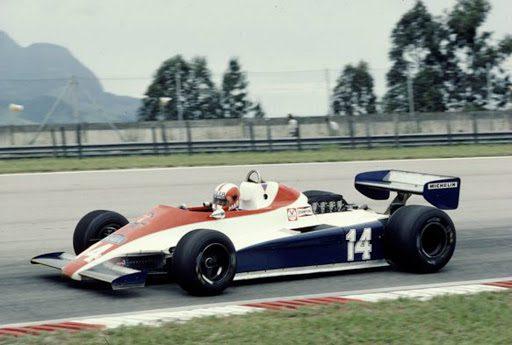
Ricardo Londoño-Bridge, Escobar’s racing protege, on the track
After a tour of the facilities, which included a commercial-spec runway, and a delicious dinner, the deal was done and Londoño was signed to the team for the 1981 season. Missing out on the first race due to not having the right license, Londoño had to wait until the following race in Brazil for his first shot at Formula 1. When the moment came, an on-track incident with Keke Rosberg (now father to World Champion son, Nico) during a practice run, prompted Formula 1 kingpin Bernie Ecclestone to look a little harder into the funding behind Londoño’s drive. Tracing the paper trail wasn’t hard and Ecclestone soon linked the driver’s funds to a Medellín-based company, whose owner was none other than Don Pablo himself. Concerned with the possible affects of such an unsavory connection, Ecclestone and the Formula 1 organisers blocked Londoño’s entry into the race just hours before it was scheduled to start, sabotaging his career in the process.
"Don Pablo found himself in the top echelons of motorsport within two years, rubbing shoulders with the sport's royalty..."
By the mid-1980s, Escobar and Londoño’s partnership had taken Colombia closer to the pinnacle of motorsport than ever before. It wouldn’t be until Juan Pablo Montoya’s drive with Williams in 2001 that the country could finally get behind a real home-grown motorsport hero. After cutting his teeth racing ratty Renault 4’s around a scrappy circuit outside of Bogotá, Don Pablo found himself in the top echelons of motorsport within two years, rubbing shoulders with the sport’s royalty, albeit indirectly and not always in the best light. The rate at which his motorsport involvement developed matches the pace at which Escobar found himself to be one of the richest, most notorious criminals in existence. Reports suggest the Medellín cartel was making up to $420 million a week at its peak, which put Escobar’s personal wealth at $25 billion in the 1980s. That roughly equates to $79 billion in today’s money.
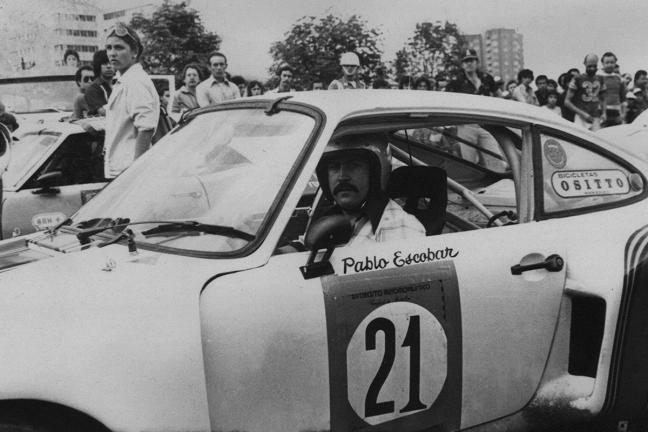
But Escobar and Londoño’s spell in motorsport was no fairytale, at least not as far as the ending is concerned. While Escobar was gunned down on a Medellín rooftop in 1993, Londoño, dejected from the failed Formula 1 experience, packed his bags and went back home. Eventually setting up shop selling boats, planes and helicopters to narcos and criminals, in 2000, the Colombian courts confiscated $10 million worth of vintage cars and property that was acquired illegally through drug trafficking and his links with the Medellín cartel. Despite the court action, Londoño swerved prison but just nine years later, he would pay the ultimate price. While staying in his hotel in Cispatá Bay, Londoño and his two bodyguards were gunned down in broad daylight by six gunmen from a rival cartel, dispensing 12 bullets into the former racing star. Despite their heady days racing fast cars and enjoying the circus ride of the international racing scene, both Escobar and Londoño met their match a long way from the race circuit. After all the infamous crimes and devastating damage, it seemed the pace of both Medellín’s fastest men proved no match for their pursuers in the end.
Read next: Ecurie Ecosse brings the Jaguar C-Type roaring back to life
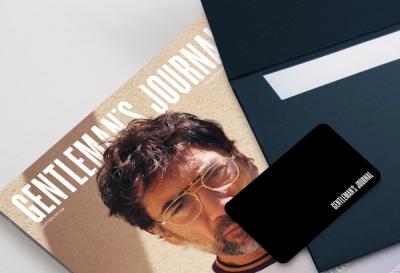
Become a Gentleman’s Journal Member?
Like the Gentleman’s Journal? Why not join the Clubhouse, a special kind of private club where members receive offers and experiences from hand-picked, premium brands. You will also receive invites to exclusive events, the quarterly print magazine delivered directly to your door and your own membership card.



